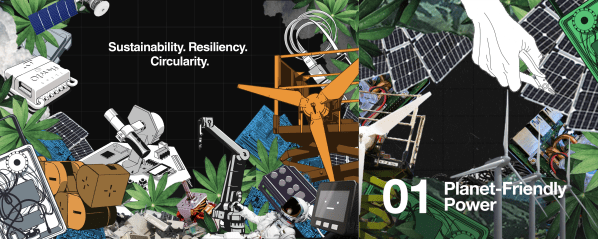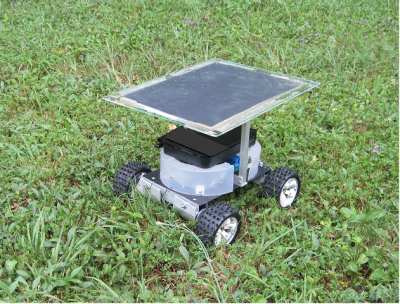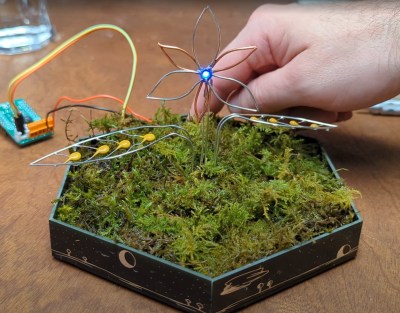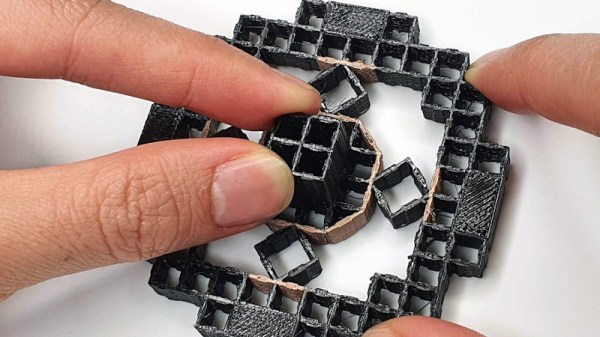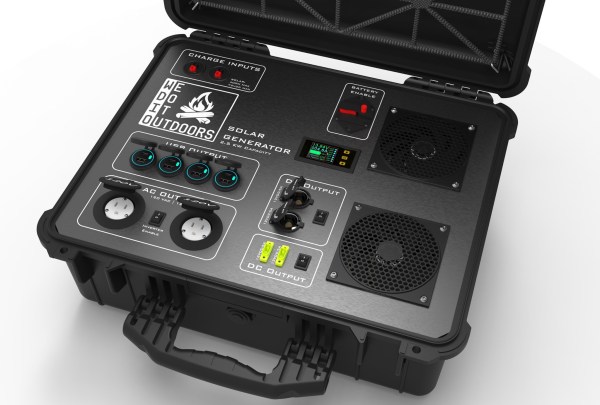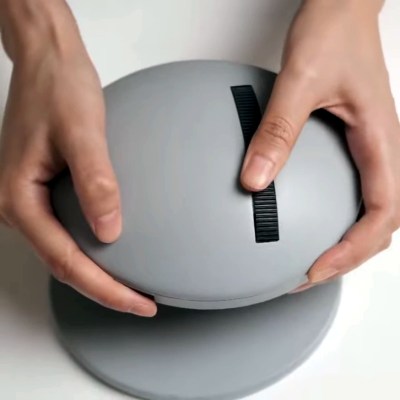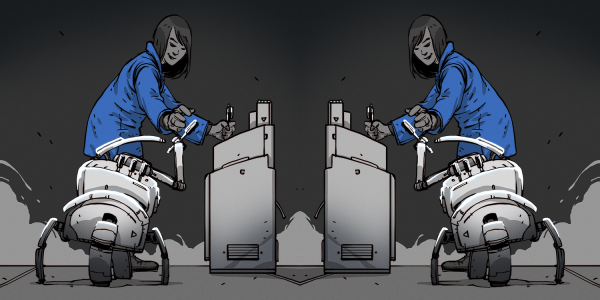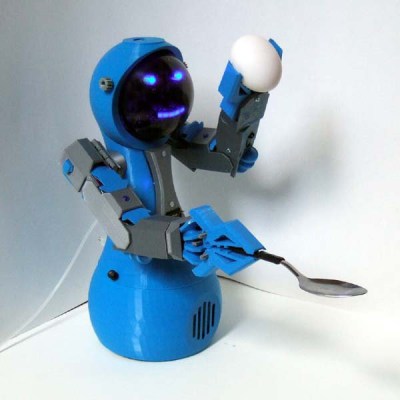Each phase of the 2021 Hackaday Prize challenged designers to reimagine traditional solutions within various fields, from robotics to assistive devices. But for the Reactivate Wildcard, the fifth and final Challenge of this year’s Prize, this theme of Rethink, Refresh, Rebuild could be applied on anything the entrant wanted. Today we’re pleased to announce the ten Wildcard projects that have been selected to win $500 and move onto the finals. Who will win the top spot this year? We’ll find out during Hackaday Remoticon in just a few weeks!
The MetaSense project is a perfect example of how new technology can be used to rethink what we generally consider to be a solved problem. This project leverages multi-material 3D printing to produce conductive cells which vary their capacitance in response to physical deformation. With some clever geometry, these cells can be chained together to produce single-part devices which can stand in for traditional toggle switches, joysticks, pressure sensors, and even accelerometers.
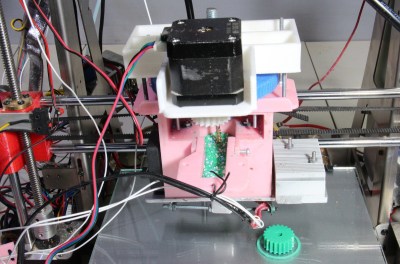 Speaking of 3D printing, the Direct Granules Extruder project imagines a future were desktop printers are no longer limited to using rolls of manufactured filament. The key is a robust extruder design that can grind up plastic pellets fast enough to feed them directly into the hotend of a conventional 3D printer. This not only means a considerable operational savings, as raw plastic pellets are much cheaper than filament by weight, but would potentially allow for printing with more exotic plastic blends and even recycled materials.
Speaking of 3D printing, the Direct Granules Extruder project imagines a future were desktop printers are no longer limited to using rolls of manufactured filament. The key is a robust extruder design that can grind up plastic pellets fast enough to feed them directly into the hotend of a conventional 3D printer. This not only means a considerable operational savings, as raw plastic pellets are much cheaper than filament by weight, but would potentially allow for printing with more exotic plastic blends and even recycled materials.
Some of the projects even made us rethink what’s possible for the individual hacker. The WiFiWart utilizes a miniature single-board Linux computer that was designed and built from the ground up by a single person, using only free and open source software. Whether it’s that this penetration testing gadget has packed a full Linux computer and two WiFi adapters into a box the size of a phone charger, or the fact that it’s been done by a dedicated hacker with free tools, you can’t help but come away impressed with this one.
Wild For Wildcard
With nearly 100 projects submitted for the Reactivate Wildcard challenge, this was clearly a theme that resonated with the Hackaday community. As always, it was extremely difficult to narrow this down to the ten finalists below:
Whether or not they made the Finals this year, the complete list of Reactivate Wildcard entries contains an incredible array of fascinating concepts that are well worth browsing through. If any of them particularly catch your eye, why not strike up a conversation with the creator in the comments and see if you can’t help out? There’s always next year.






